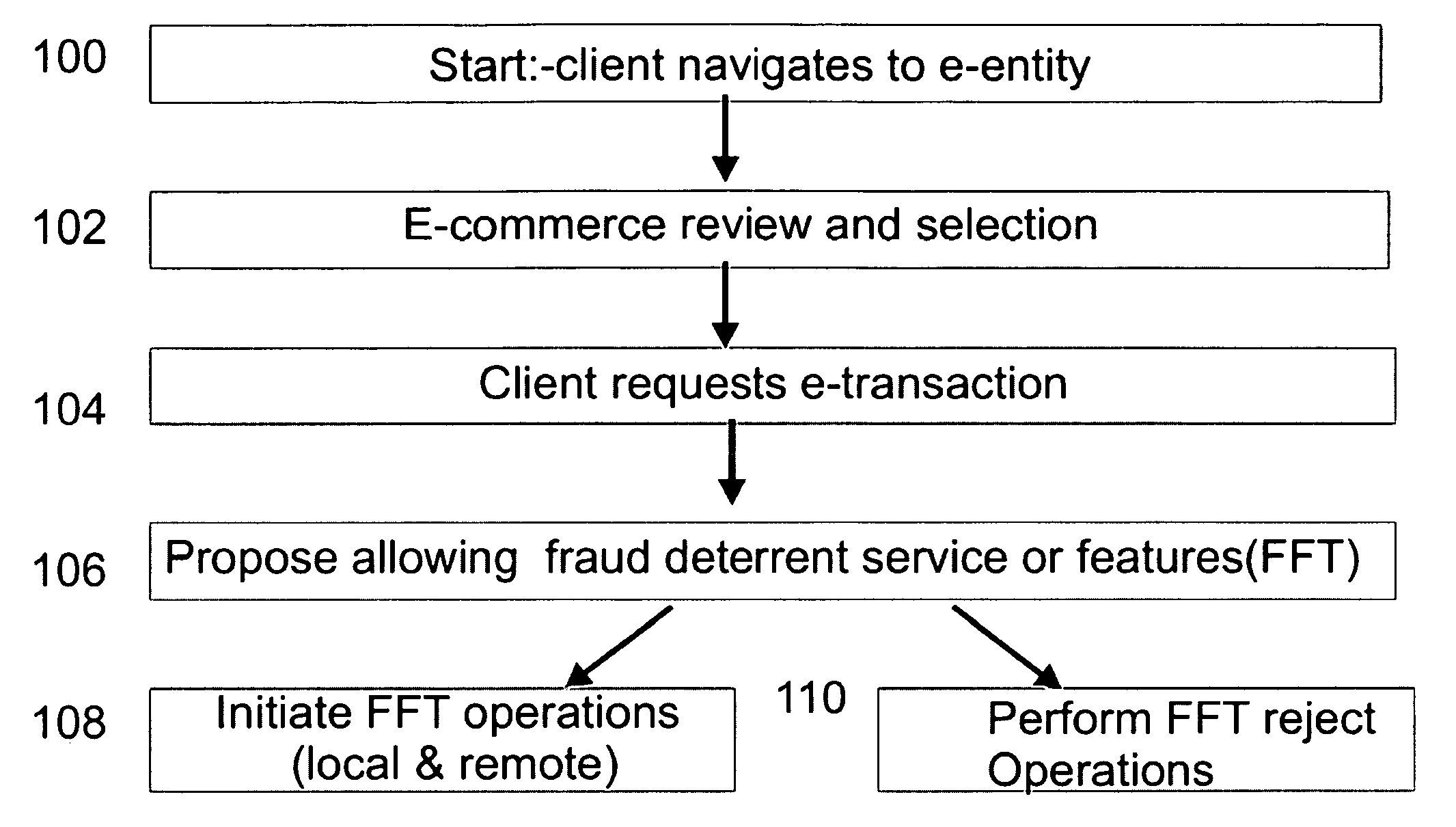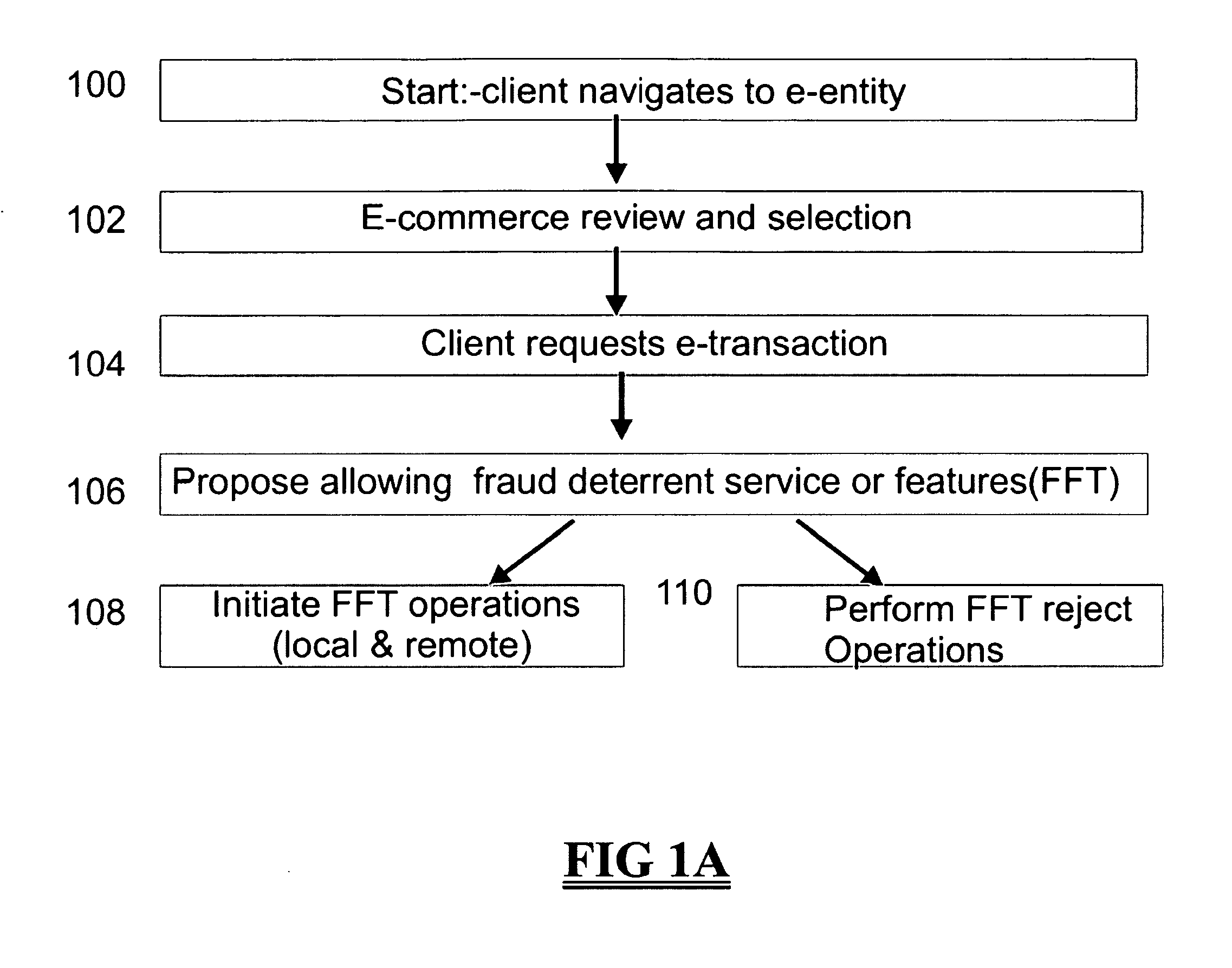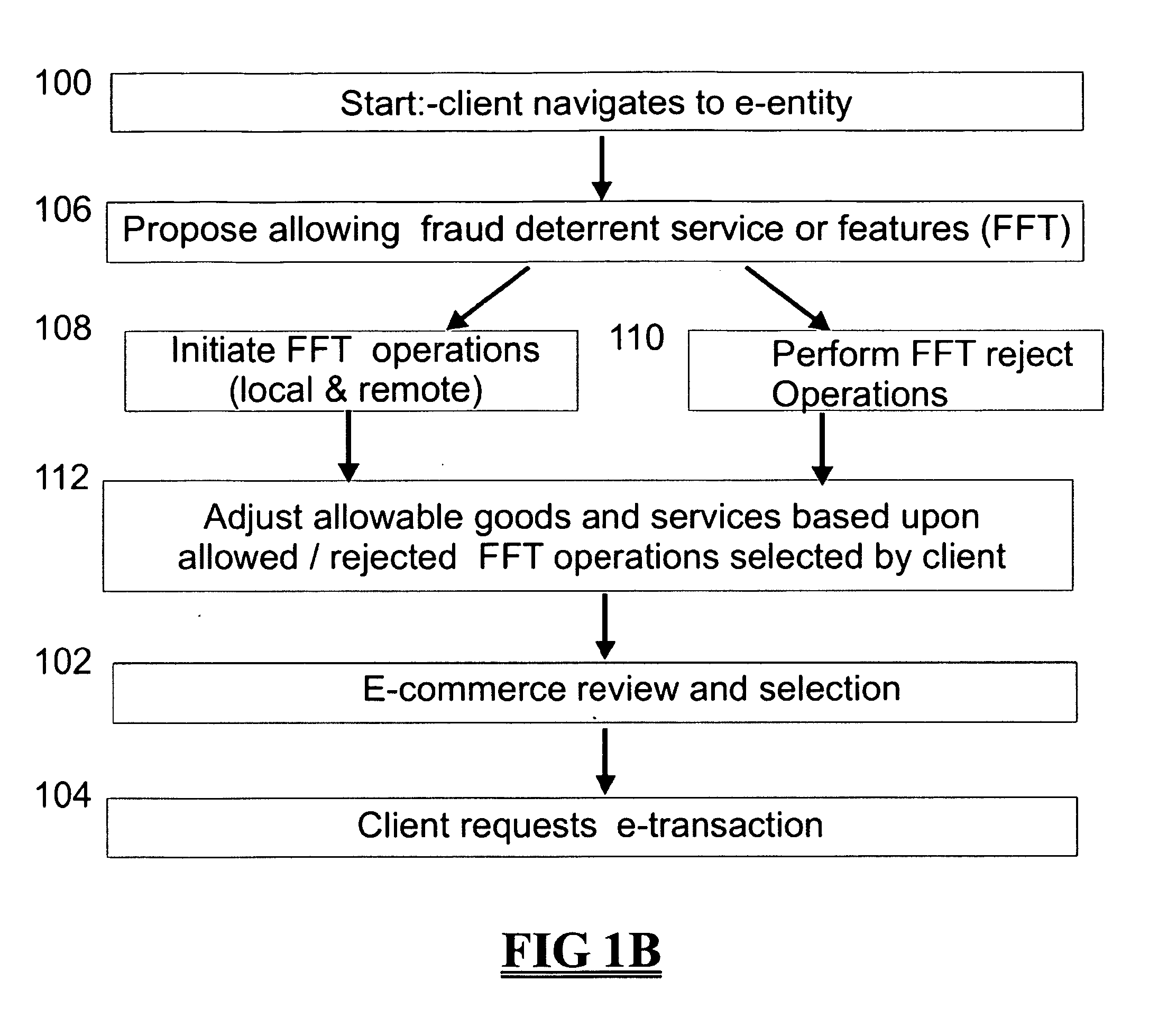Systems and methods for facilitating electronic transactions and deterring fraud
a technology of electronic transactions and fraud prevention, applied in the field of electronic transactions and preventing or deterring fraudulent activity, can solve the problems of affecting the business, affecting the sale of products, and the cost of doing business, and the company will have failed to realize a profit from a valid sale of products
- Summary
- Abstract
- Description
- Claims
- Application Information
AI Technical Summary
Problems solved by technology
Method used
Image
Examples
Embodiment Construction
[0043]FIG. 1A shows a schematic illustration of an embodiment of a method of providing a “fraud free transaction” (FFT) or “fraud-free purchase (FFP). In this example, an e-transaction is modified according to fraud deterrents which are automatically selected, or client selected, after items and services are selected by the client. This may occur as part of the ‘check out’ process and may be integrated into a digital shopping-cart feature. Alternatively, this may occur when the client enters a website or at another time or in response to a particular action by the client such as entering a particular part of a website or selecting a particular product. In step 100 a client navigates to a website offering goods and services. In step 102 the client views and selects various goods and services available on the website. This may further comprise making selections, or agreements, related to terms of use as may occur in the case of digital media and services. In step 104 the client reques...
PUM
 Login to View More
Login to View More Abstract
Description
Claims
Application Information
 Login to View More
Login to View More - R&D
- Intellectual Property
- Life Sciences
- Materials
- Tech Scout
- Unparalleled Data Quality
- Higher Quality Content
- 60% Fewer Hallucinations
Browse by: Latest US Patents, China's latest patents, Technical Efficacy Thesaurus, Application Domain, Technology Topic, Popular Technical Reports.
© 2025 PatSnap. All rights reserved.Legal|Privacy policy|Modern Slavery Act Transparency Statement|Sitemap|About US| Contact US: help@patsnap.com



